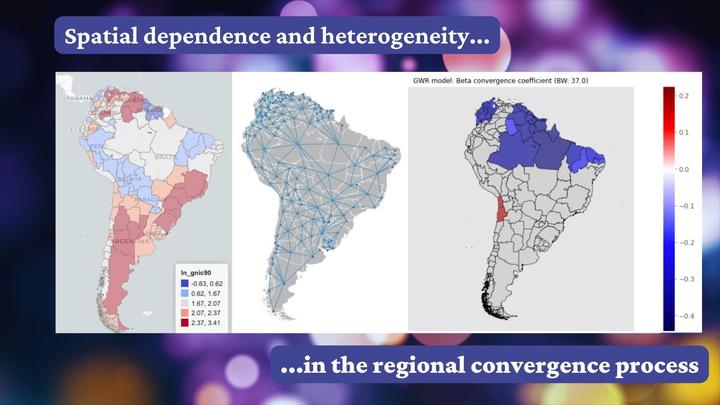This paper studies the evolution of economic and social disparities across South America. By exploiting a novel multi-country subnational dataset, we evaluate the evolution of gross national income per capita (GNI) and the human development index (HDI) across 151 subnational regions over the 1990-2018 period. In particular , regional dynamics are evaluated through the lens of two spatial convergence models. The first model deals with the role of spatial dependence. Results indicate that for both GNI and HDI, there is an overall process of regional convergence. Furthermore , spatial dependence plays a significant role in this process. A spatial error specification suggests that spatial dependence accelerates the speed of convergence in some decades, but decelerates it in others. The second model deals with the role of spatial heterogeneity. Results indicate that for both GNI and HDI, the speed of convergence is largely heterogeneous across space and time. Moreover, economic and social disparities are characterized by multi-country spatial clusters that show both converging and diverging trends. Taken together, these results emphasize the importance of accounting for spatial dependence and heterogeneity when evaluating the dynamics of economic and social inequality in South America.
